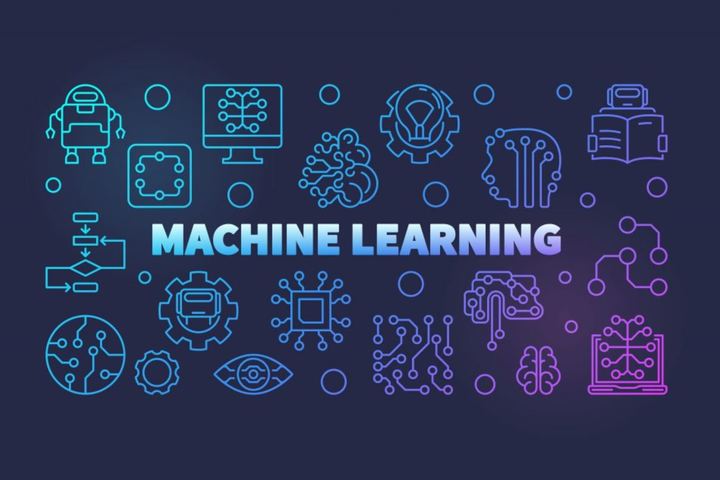So you are an IT professional or a recent grad looking for a job in the Artificial Intelligence (AI) domain. To begin with, upskill and master AI and Machine Learning to build a strong resume for an AI-ML job role. Perhaps you may want to look at the AI and Machine Learning Courses in Mumbai to brush up on your theoretical knowledge, software development skills, and deep learning applications. It will surely build your skills and help you ace the job interview that you are keen upon.
Besides registering for the course, you will also want to know all the ways to sail through your job interview. So if you are wondering what Machine Learning questions you may have to deal with in your interview, you have come to the right place.
The interview for a Machine Learning job role is similar to any software engineer interview. Interview questions test your fundamental theoretical knowledge, software development, and algorithms. A sound understanding of algorithms is necessary to stand out from the herd and get hired by a top company.
So walk through these questions and crack your interview!
Top 10 Machine Learning Interview Questions with Answers
At the very outset, do your homework. Check out the profile of the hiring company, the business model, and industry challenges. Although your preparations can set you apart from the rest of the applicants, you will need to prepare for Machine Learning interview questions that test your knowledge, skill sets, programming abilities, and hands-on project experience.
Here are the top interview questions common to most beginner Machine Learning job roles:
Q1. Explain Machine Learning in layman’s terms.
Machine Learning is writing code that trains a machine to give the desired output. It uses historical data and does not require explicit programming to achieve the outcome. So it learns on its own with repetitive operations. Just as a baby keeps learning from experience, stumbling, falling, getting up and walking again, Machine Learning algorithms, too, self-learn iteratively from the data and keep improving to give the best results.
Q2. How do you source data sets?
Free and open data sets are available, such as Amazon Product Data, Kaggle, Sentiment analysis, OpenML, DataHub, Papers with Code, VisualData, and more.
Q3. Differentiate between supervised and unsupervised Machine Learning
As the name suggests, supervised Machine Learning is highly supervised, whereas unsupervised learning is not administered.
Supervised machine learning requires a labeled dataset. A Machine Learning model can learn from the defined data to predict outcomes. Unsupervised learning however does not require a complete, clean, and labeled dataset. It involves self-organized learning by exploring the underlying patterns in the data to predict the output. We provide the machine with data and instruct it to look for hidden features and clusters.
Thus, supervised learning maps labeled data to known output, but unsupervised learning explores patterns to predict the output.
Supervised learning makes predictions based on a class type. Unsupervised learning discovers underlying patterns.
Supervised learning involves two main tasks, Regression and Classification. Unsupervised learning deals with clustering and associative rules.
Q4. How do you ensure that your model is not overfitting?
Keeping the model design simple is one of the best ways to ensure the model does not overfit. The noise in the model can be cut down by considering fewer variables and parameters. Cross-validation techniques like K-folds cross-validation can keep overfitting in control, and regularization techniques such as LASSO can prevent overfitting by penalizing the parameters that cause the overfitting.
Q5. What is your favorite algorithm? And why?
We cover a sample algorithm here. But you may choose any other algorithm you are comfortable with expressing.
The Decision Trees algorithm helps identify feature importance by discovering the “best” attribute for splitting data at each node in the tree. You can not only overcome any problem of overfitting by defining the maximum depth of the tree or the minimum sample size for the split but even prune the final tree upon completion.
This algorithm is favored by me because of the advantages it offers:
- Involves simple modeling
- Feature selections are performed by the algorithm itself
- Does not requires much data preparation
Q6. Differentiate between deductive and inductive Machine Learning?
Deductive reasoning allows you to make deductions based on known facts. Inductive reasoning allows you to make deductions based on the data gathered.
Deductive Machine Learning deduces what is right or wrong about your statements or conclusion. Inductive Machine Learning begins with known instances from which to draw conclusions and learn.
Q7. What is the main advantage of Naive Bayes?
The Naive Bayes classifier converges very fast when compared to other models like logistic regression. So less training data is needed.
Q8. What should you do when your model is suffering from low bias and high variance?
When the model has the problem of low bias and high variance, it is called overfitting and indicates the complexity of the model.
We can simplify the model by reducing the number of features in the dataset or implement techniques such as Regularization to trim down the variance and increase the bias. Another way is by
Another way is using a bagging algorithm to handle the high variance, randomly subsampling the dataset mm times and training the model using each subsample. It averages the predictions of each node.
The k-nearest neighbor algorithm can also achieve a trade-off between bias and variance by increasing the value of k to increase the number of neighbors and thus amplify the bias of the model.
Q9. How do you choose an algorithm for a classification problem?
You may mention that no one solution fits all. Several factors are considered when selecting a Machine Learning algorithm. The choice depends upon how much accuracy we require and the size of the training set.
Typically, we would follow the following method:
a) Define the problem.
b) Identify available algorithms
- Logistic Regression.
- Support Vector Machines.
- k-Nearest Neighbours.
- Classification and Regression Trees
- Linear Discriminant Analysis
- Naive Bayes.
c) Implement them.
Set up a Machine Learning pipeline to compare the performance on the given dataset, using evaluation criteria or metrics. We would then select the best-performing algorithm and run it once or in intervals while adding new data to understand how it works.
d) Improve results using various optimization methods
Cross-validation techniques like k-fold and hyperparameter tuning may be used on each algorithm to optimize the performance of the model. Alternatively, hyperparameters may be manually selected, as the case may require.
Q10. Tell us the algorithms used in driverless cars.
The Machine Learning algorithm used in driverless cars is based on Object Tracking. It develops the accuracy of profiling and demarcating between objects, like whether another vehicle, pedestrian, or animal is present in its proximity. The pattern recognition algorithm is used with a training dataset fed with a dataset of images containing objects. Other algorithms used are Bayesian regression, neural network regression, and decision forest regression, among others.
Conclusion
Now that you are familiar with possible interview questions, you can go ahead with your preparations for the Machine Learning interview. Register for a course to upskill your technical knowledge and invest time in your learning curve.













